As we have said before, Costa Rica’s rainy season (May to September) is an amazing time to visit. With intermittent rain, usually only in the afternoons or evenings, you can enjoy a lot of daytime activities. Plus, everything is lush and green, wildlife is more active, and popular attractions are less busy. In this post, we will lay out a 12-day rainy-season itinerary that visits Costa Rica’s Caribbean and Pacific coasts, as well as the famous Arenal Volcano.
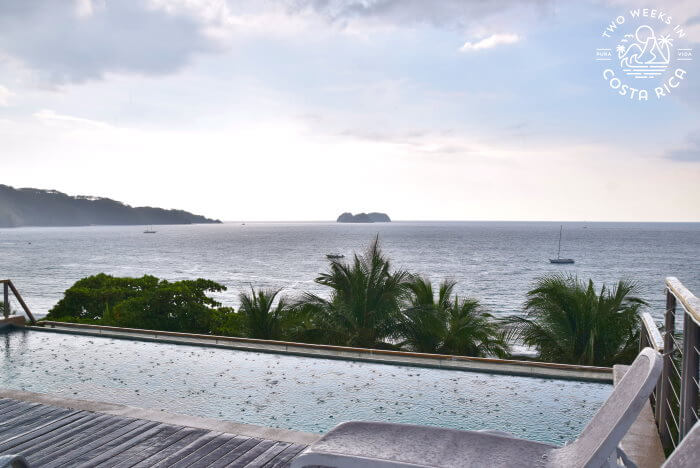
Costa Rica Rainy Season Itinerary – Overview
This itinerary has you flying into San Jose (SJO Airport) and out of Liberia (LIR Airport). If needed, you could modify it, flying out of SJO with a longer drive or stay at a hotel near San Jose at the end.
You will get to see both coasts and also the rainforest-filled center of the country.
After flying into San Jose, you will first visit Tortuguero on the Caribbean coast. Your next stop will be La Fortuna in the northern middle part of the country. Finally, you will end on Costa Rica’s northern Pacific coast in Playa Hermosa, Guanacaste.
During the rainy season, these areas typically have a bit less rain compared to other parts of the country. Read our post, Weather in Costa Rica: What You Need to Know, for some useful statistics.
Day 1: Arrive in San Jose and Stay Overnight
Unless your flight arrives early in the morning and you are ready for more travel, we recommend staying overnight near SJO Airport on your first day. This is because Tortuguero is remote and harder to get to. Most transportation options are in the morning (see below).
Just because you are staying near the airport, though, doesn’t mean this day can’t be part of your Costa Rica experience. Check out our post on where to stay near SJO Airport for some great options that will give you a warm Costa Rican welcome.
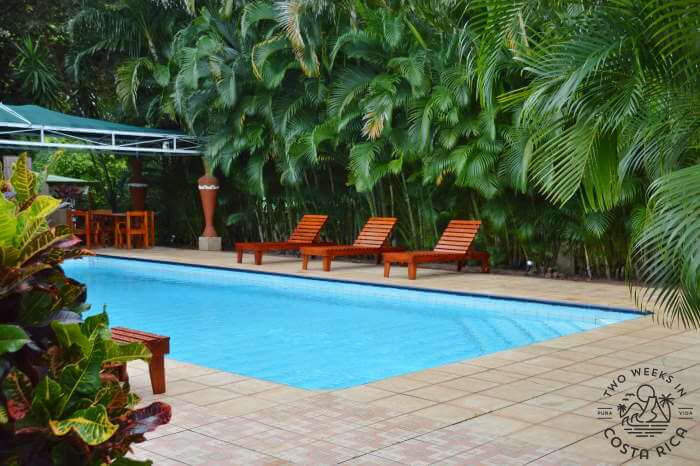
Days 2-4: Tortuguero (3 nights)
Getting to Tortuguero
You won’t need a car in Tortuguero since there are no roads. Instead, the town is accessed by boat, through a series of rivers and canals. You can also reach it via small plane.
Both options typically depart in the morning or early afternoon, which is why we recommend staying in San Jose the first night and getting an early start the next day.
Shuttle and Boat
From the SJO area, a private shuttle can bring you to the docks of La Pavona. It’s about a three-hour ride. Taxi boats leave this riverside town several times a day on a set schedule. See our Getting to Tortuguero post for more information.
Additionally, some lodges in Tortuguero have their own boats that can pick you up at the dock. The boat ride to Tortuguero is a little over one hour and is very scenic.
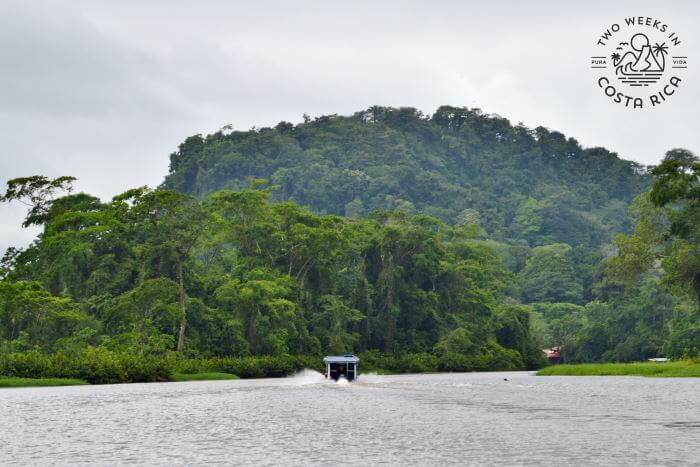
Flying to Tortuguero
Some of the bigger lodges in Tortuguero include flights from San Jose to Tortuguero in their packages. The flight, on a small plane, is only about one hour. Currently, we don’t recommend flying because of safety and reliability concerns in the last few years. However, many people still travel this way. If you would prefer, your hotel may have a shuttle van and boat option as well.
What to Expect in Tortuguero
Tortuguero is a small village on Costa Rica’s northern Caribbean coast. The remoteness of the town and abundant wildlife are its main appeal. There is not much around except thick mangrove forests, winding estuaries, and miles of beach.
The village of Tortuguero sits on a thin peninsula, running parallel to the coast. Most of the hotels and businesses are on the inland side, which has a calm brackish-water estuary. Some lodges are farther up the waterway and more isolated.
On the other side of the narrow peninsula is the Caribbean Sea. The expansive gray-sand beach is usually too rough for swimming but internationally famous for sea-turtle nesting.
Turtle watching is especially good here during rainy season, which is a big part of why we’re recommending it.
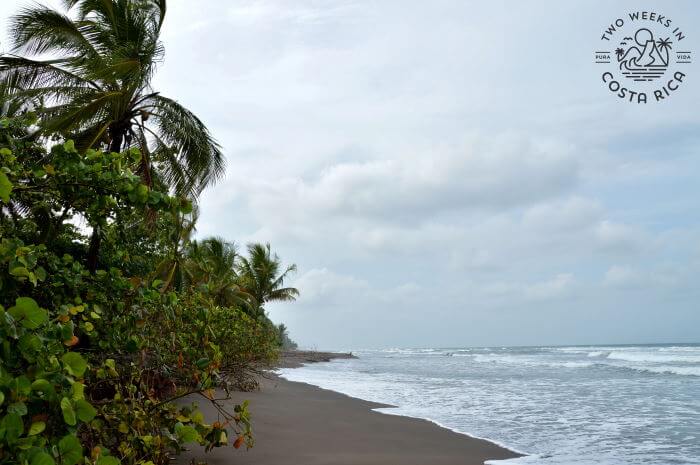
Things to Do in Tortuguero
The main channels of the river in Tortuguero National Park are wide and popular for boat tours. Or you can paddle kayaks or canoes through the smaller creeks and coves.
The surrounding forest hosts amazing wildlife like monkeys, sloths, lizards, and many species of tropical birds. The national park has some land trails near town to explore as well.
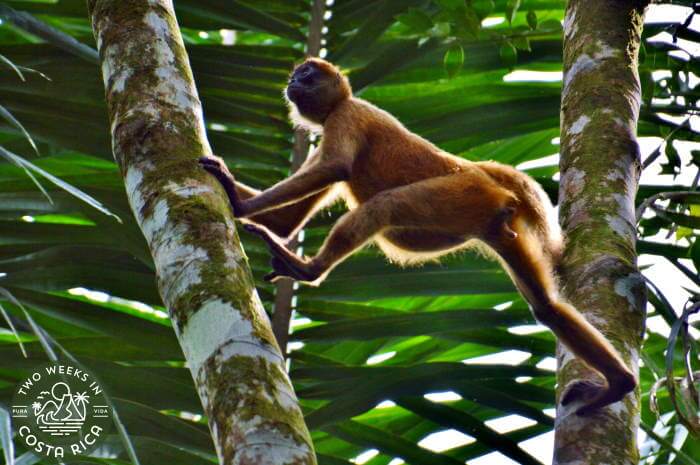
During rainy season, especially between July and October, you can see sea turtles. They arrive at night to lay their eggs on Tortuguero’s long beaches.
Green sea turtles are the most abundant and easy to spot. Huge, leatherback turtles appear more sporadically on some nights between March and May. Turtle tours are offered through the local guide association. Your lodge also will have a guide that they work with.
For more information about the town, including restaurant and hotel recommendations, read our post, Tortuguero: Off the Resort.
Days 5-8: La Fortuna (4 nights)
Getting to La Fortuna
Unless you have a package with a flight back to San Jose, most travelers going to La Fortuna from Tortuguero pass back through the boat docks at La Pavona. From here, you can either have a shuttle van pick you up or rent a car and have it delivered.
Note: Only a couple of rental car companies service La Pavona. If you are looking for a reliable one, we recommend Adobe Rent a Car. Use our Rental Car Discount page to get a quote. Just select Guapiles/Tortuguero N.P. as your pick-up location and write in the comments section that you need pick up at La Pavona. Cars can be delivered to the docks starting at 11:00 a.m.
From the boat docks at La Pavona, the drive to La Fortuna is about three hours.
What to Expect in La Fortuna
La Fortuna is one of Costa Rica’s most popular destinations and for good reason. The town is situated right next to the iconic Arenal Volcano. Many hotels are spread out around the base, giving picturesque views of the cone-shaped giant. Though these days the volcano isn’t erupting, it is still an amazing sight.
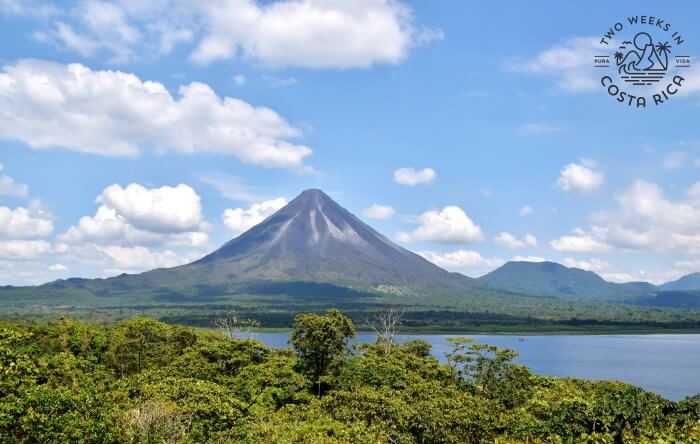
While the volcano is a centerpiece for activities, there is a long list of adventure, nature, and cultural experiences to be had here as well. We always recommend at least four nights in this area, so that you don’t feel like you are missing out.
La Fortuna Activity Highlights
Hot Springs
While Arenal Volcano isn’t gushing lava anymore, it still has plenty of power. Underground volcanic activity heats springs and rivers to source the area’s hot spring resorts. Some popular ones to visit are Tabacon, known for its luxury, Baldi, which has more of a fun/party atmosphere, and Ecotermales, which is smaller and peaceful.
Rainy season is a great time to visit hot springs, since a little light rain actually makes for a nice contrast with the warm water.
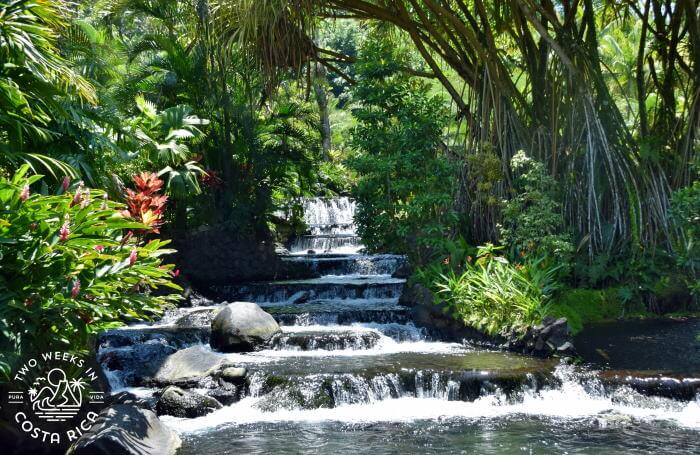
Wildlife Viewing
Hiking in La Fortuna doesn’t only give you unique views of the volcano. Plenty of wildlife can be seen on the trails as well.
During the day, hikes at Arenal Volcano National Park and the Arenal 1968 Trail are popular. You may see monkeys, frogs, interesting insects, and exotic birds.
In the evening, you can see how the forest comes alive on a night tour. Several are available and offer sightings of sloths, sleeping birds, frogs, snakes, and other creatures passing through. You never know what you will see.
Zip Lining & Hanging Bridges
La Fortuna is a great place to experience the rainforest canopy. You can choose to zip through the treetops on cables or take a more leisurely walk on a series of suspension bridges.
For zip lining, the La Fortuna area has a half-dozen different facilities, ranging from intense to tranquil enough for grandma.
For hanging bridges, there are two main places, Sky Adventures and Mistico Park. Both offer great experiences, but Sky Adventures involves more hiking.
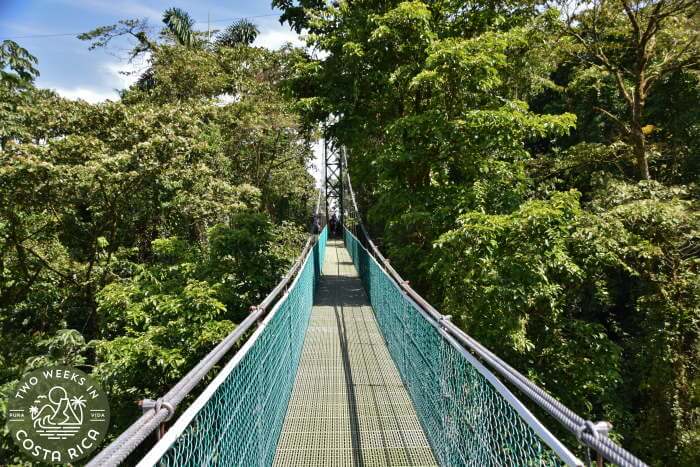
For much more information about La Fortuna, see our destination guide, La Fortuna: What to Expect from Costa Rica’s Most Popular Destination. We also have a hotel guide that may help you choose between the many accommodation options.
Days 9-11: Playa Hermosa, Guanacaste (3 nights)
Getting to Playa Hermosa
From La Fortuna, you can drive or shuttle to Playa Hermosa. Playa Hermosa is in the northwestern part of the country, along the northern Pacific coast. From La Fortuna, the drive is about three hours.
What to Expect in Playa Hermosa, Guanacaste
Playa Hermosa is the name for several beaches in Costa Rica. It literally translates to “beautiful beach.” And the Playa Hermosa in Guanacaste Province definitely lives up to this name.
The calmer cove has a nice crescent-shaped beach situated between two points. From under lofty palm trees, you can watch boats float in the harbor and listen to waves swoosh against the shore.
Behind the sand, the relaxed community of Playa Hermosa is made up of part-time condo owners, full-time expats, and locals, who have either grown up nearby or escaped the city to live the beach life.
The small town has a mix of accommodations from hotels and vacation rentals to condos and timeshares. There are also a handful of good restaurants.
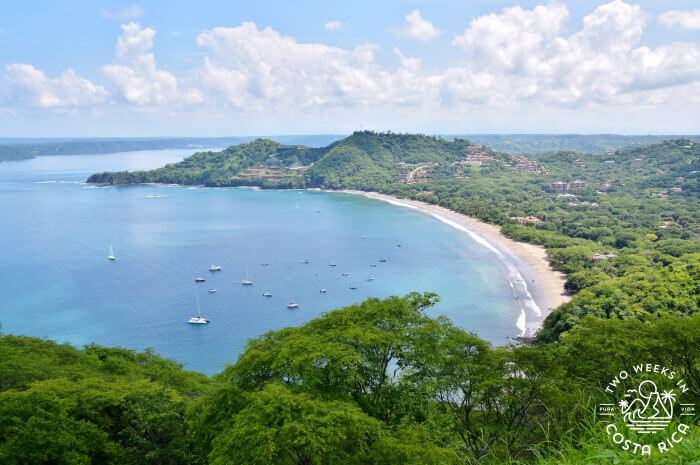
Things to Do in Playa Hermosa
After an action-packed first part of the trip, you may want to park yourself on the beach for a few days. But if not, there are some fun activities in and around Playa Hermosa.
Eco-Adventure Park
If you missed out on zip lining in La Fortuna, you can still have a chance in Playa Hermosa. The nearby Diamante Eco-Adventure Park has a Superman-style zip line that gives you the feeling that you are flying. There’s also horseback riding, ATV rides, and some more mellow activities like a coffee demonstration and wildlife sanctuary.
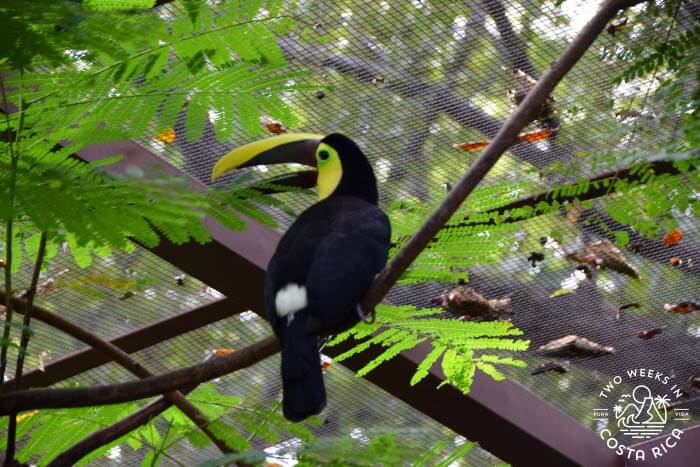
Catamaran Cruise
This area of the country is excellent for catamaran cruises. Though the rainy season may force you to take a morning tour when rain is less likely, it is still well worth it.
Boats depart from Playa Hermosa or nearby Playas del Coco and take you out around rocky points to far-off coves. They then anchor in a secluded spot for some snorkeling, swimming, and lunch. From July to November, you may even get to see some migrating humpback whales. We spotted a mother and baby off a catamaran on one trip in September.
To read more about Playa Hermosa, check out our post, Playa Hermosa (Guanacaste): Costa Rica’s Northern Beauty.
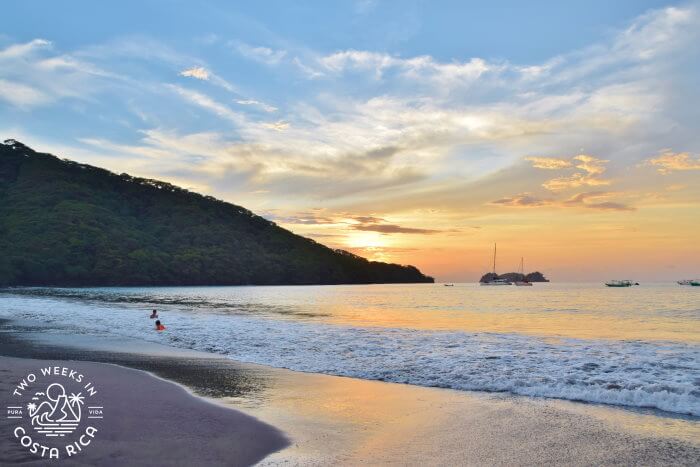
Day 12: Depart Home from LIR Airport
With only a 30-minute drive to LIR Airport, you can enjoy every last minute at the beach before it’s time to leave for the airport. You may even be kicking sand off your feet at the boarding gate.
* * *
With this rainy-season itinerary, you should be able to explore some of the best parts of Costa Rica without getting completely washed out. We hope it helps with your planning and you get to experience our favorite season in Costa Rica for yourself.
Making an itinerary for the rainy season? Leave a comment below.
Looking for more information to help you plan? Check out these posts:
Rainy Season in Costa Rica: How Wet Is It? Read this post to find out what the rainy season feels like and how much rain to expect in general each month.
Planning a Family Vacation to Costa Rica: Essential Tips and Info – Traveling during the kids’ school break? Check out this post for some tips.
Costa Rica and Mosquitoes: Tips to Prevent Zika, Dengue, and More – Prevent bites with some simple preventative measures. Includes recommendations for which insect repellents to use.
